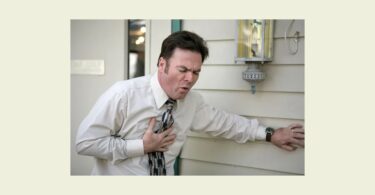Key Words: – Major Depressive Disorder (MDD), Catatonia, Disappointment, Denial, Natrum Muriaticum.
Abstract:
Catatonia is a behavioral condition that causes an abnormal body movement and posture. It is usually associated with mood disorders, schizophrenia and other medical and neurological conditions. It is a reflection of the severity of the underlying condition. Acute medical and neurological conditions, as well as drug withdrawal and toxic drug states, can trigger catatonia.
A 23-year male patient presented with complaints of decreased psychomotor activity and mutism. In this case, we have major depressive disorder in the background. Identifying the causation and defence mechanism in the case is key to handling catatonia in an effective way.
This case is unique as it has clear causative factors and an underlying immature defense mechanism i.e., complete denial. The patient with major depressive disorder failed to cope with reality and ended in catatonia. This portrait of the disease leads us to 2 remedies i.e. Ignatia and Natrum Muriaticum.
Materia medica references were taken. Here we have morbidly high sensitivity and reactivity at the mind level. Hence, the physician preferred high potency with frequent repetition. We got rapid and gentle recovery in this case because of early diagnosis, identifying the causation and defence mechanism. That has provided the basis for homoeopathic treatment and overall management of the case, hence it yields a better outcome.
Introduction:
Catatonia was 1st described by Karl Ludwig Kahlbaum as a “symptom complex,”(1) Catatonia is a behavioural condition that causes an abnormal posturing and movements. It is usually associated with mood disorders, schizophrenias and other medical and neurological conditions. It is reflexion of severity of the underlying condition. Acute medical and neurological conditions, as well as drug withdrawal and toxic drug states, can trigger catatonia.
Current data shows that it occurs as a presenting complaint in 7-15% of acute psychiatric inpatients. (2,3). The awareness of catatonia among general medical doctors and even psychiatrists is lacking, and it is often seen as a historical diagnosis. Due to this, recognition of catatonia is often missed. If diagnosis is not done on time the risk of morbidity increases and can lead to a fatal outcome.
Patients suffering from catatonia are at high risk of developing medical complications such as dehydration, malnutrition, deep vein thrombosis, pulmonary embolism, pressure ulcers, contractures, constipation, urinary tract infections, aspiration pneumonia and other infections.(4)(13)
The very nature of catatonia can make treatment challenging. It is difficult to carry out patient interviews and physical and mental status examinations, thereby interfering with the recognition of underlying diagnoses. These complications of catatonia highlight the importance of recognizing the syndrome and quickly initiating the treatment.
According to the Diagnostic and Statistical Manual of Mental Disorders, Fifth Edition (DSM-5), catatonia is associated with a mental disorder and is diagnosed when the clinical picture is dominated by at least three of the following: stupor, catalepsy, waxy flexibility, mutism, negativism, posturing, mannerisms, stereotypy, agitation, grimacing, echolalia and echopraxia.(5)
CASE
This is a 26-year old male, occupation- online business. Education: graduate. No prior history of psychiatric illness. Family history of acute episodes of psychosis in father.
His sister who is homoeopath and general practitioner referred him. He is lean, thin with whitish complexion, and has a beard. He was brought to clinic by his father. He sits in the waiting area in semi erect position. On observation he was just starring at the wall with minimal body movements. Not blinking his eyes.
On history taking he didn’t answer any questions. No eye contact and continues to stare at the wall. I tried some questions and called him by his name but he did not respond. It looks like he did not hear any words and he is in his own world.
Hence, I decided to inquire from the father who shared that his son has been in this state for three days, not taking care of himself, not sleeping, not eating by himself (eats only if someone feeds him. He was not talking, only starring, and had trembling of extremities.
H/O-one sided love affair with a girl who got married but patient is in denial that she got married. Before around months he started an online business but he lost the entire invested amount. After that he developed low mood, decreased socialization, became less talkative, removed his hair and beard on a bet with friends.
We can identify major symptoms like low mood, poor socialization, foolish behaviour, became less talkative followed by reduced psychomotor activity, mutism, negativism, trembling of extremities, poor self care, total sleeplessness and appetite lost. Introversion and anger issues are shared by sister.
After case formulation, we came to the diagnosis: Catatonia in Major Depressive Disorder
Homoeopathic case processing was done based on cardinal principles. Following is the repertorization result:
| 1 | MIND – AILMENTS FROM – love; disappointed (8) | 41 | ||
| 2 | MIND – AILMENTS FROM – business failure | 17 | ||
| 3 | MIND – TACITURN (12) | 260 | ||
| 4 | EYE – STARING | 146 | ||
| 5 | STOMACH – APPETITE – wanting | 280 | ||
| 6 | SLEEP – SLEEPLESSNESS – sad events; from (10) | 2 |
| IGN. | NAT-M. | HYOS. | PH-AC. | AUR. | NUX-V. | SULPH. | LYC. | VERAT. | BELL. | |
| 13/6 | 13/6 | 11/5 | 11/5 | 10/5 | 10/5 | 9/5 | 9/3 | 8/5 | 8/4 | |
| 1 | 4 | 4 | 3 | 3 | 3 | 1 | 1 | – | 1 | 2 |
| 2 | 1 | 1 | 2 | 1 | 2 | 1 | 1 | – | 1 | – |
| 3 | 3 | 2 | 2 | 3 | 3 | 3 | 3 | 3 | 3 | 2 |
| 4 | 2 | 1 | 3 | 2 | 1 | 2 | 1 | 3 | 2 | 3 |
| 5 | 2 | 3 | 1 | 2 | 1 | 3 | 3 | 3 | 1 | 1 |
| 6 | 1 | 2 | – | – | – | – | – | – | – | – |
We have ailments from love disappointed and business failure and symptoms like taciturn, starring, sleeplessness from sadness, appetite poor. When we refer to condensed Materia medica by C. Hering we have symptoms like absence of mind(9), joyless, indifferent and taciturn.(6)(7) On this basis we selected Natrum Muriaticum as a suitable remedy for the case. This selection was helped by core disposition of the patient i.e. Introversion and anger.
Here is the follow up analysis. (11)
| Date | Details of patient’s condition | Remedy | Potency | Repetition |
| 18/09/2021 | As written in case details | Nat Mur | 1M | 6th hrly |
| 22/09/2021 | Started eating on own, taking good self care, selective mutism, staring +, sleep-4-5 hrs, stool-n, much better according to sister and father. | Nat Mur | 1M | 4th hrly |
| 23/09/2021 | Better, socialization++, staying with friends, good self care, Significant reduction in staring and no trembling. occ. verbal response started, f/u by sister | Nat Mur | 1M | 4th hrly |
| 28/09/2021 | speech improved, takes pauses, sleep-6hrs, cooperative, well dressed, maintaining eye contact improved, self care++, occ. buried in thoughts before answering the questions | Nat Mur | 1M | Tds |
| 13/10/2021 | sleep-n, mood-n, gen-n. maintaining eye contact. Patient started working regularly. Feels no need for medication. | Nat Mur | 1M | 1dose |
Discussion:
In this case we got important history information from the relatives which has provided us causation and underlying defence mechanism (14). This data helped us to come to an early diagnosis and planning the treatment plan. The portrait of disease lead us to two remedies i.e. Ignatia and Natrum Muriaticum. Potency selection is crucial in this case. Here we have morbidly high sensitivity and reactivity at the mental level. Hence, we preferred high potency with frequent repetition. The final prescription was Natrum Muriaticum as mentioned in the table. Rapid and gentle recovery was achieved in this case. We do not have much research literature about the role of homoeopathic treatment in case of catatonia in MDD.
Conclusion:
Catatonia is a complex neuropsychiatric disorder which is likely to be significantly under-diagnosed due to difficulties with clinical examination, early recognition and other co morbid medical and psychiatric conditions. Assessment by a competent physician facilitates both improved diagnostic accuracy and a more co-ordinated approach to treatment.
Delays in treatment of this condition can result in poor response to treatment, and significantly increased morbidity and mortality rates among affected patients. However, if recognised and handled in early phase, with help of homoeopathic treatment gentle and rapid clinical improvement can be achieved.
Bibliography:-
- Johnson J. Catatonia: The tension insanity. Br J Psychiatry. 1993;162:733–8. [PubMed] [Google Scholar]
- Fink M, Taylor MA. Catatonia: Subtype of syndrome DSM (editorial) Am J Psychiatry. 2006;163:1875–6. [PubMed] [Google Scholar]
- Takata T, Takaoka K, Fujigaki M. Catatonia in the elderly: A review. Int J Psychiatry Clin Prac. 2005;9:230–7. [PubMed] [Google Scholar]
- Rasmussen SA, Mazurek MF, Rosebush PI. Catatonia: Our current understanding of its diagnosis, treatment and pathophysiology. World J Psychiatry. 2016 Dec 22;6(4):391-398. doi: 10.5498/wjp.v6.i4.391. PMID: 28078203; PMCID: PMC5183991.
- American Psychiatric Association: Diagnostic and Statistical Manual of Mental Disorders, Fifth Edition. Arlington, VA, American Psychiatric Association, 2013.
- C Hering: Condensed Materia Medica, India, B. Jain Publishers, 1995.
- S.R. Phatak: material medica of homoeopathic medicines, India, B. Jain Publishers, 2nd revised and enlarged edition: 1999.
- Rajan Sankaran: the soul of remedies, India, Homoeopathic medical Publishers, 1st jan 2014.
- John Henry CLARKE, M.D.: A DICTIONARY OF PRACTICAL MATERIA MEDICA, Jain Publishers, Reprint edition: 2006.
- Calvin B Knerr, Repertory of Hering’s Guiding symptoms of our Materia Medica, India, B.Jain Regular; first edition, 1 june 2009.
- L. D, I.C.R OPERATIONAL MANUAL. ed. kapse DaR, editor. dahisar east, mumbai: Dr.M.L. Dhawale memorial trust, third edition; 2011, reprint 2015.
- M. Boger, Boger Boenninghausen’s Characteristics & Repertory, India, B. Jain Publishers, 1 April 2009.
- Gross, A. F., Smith, F. A., & Stern, T. A. (2008). Dread complications of catatonia: a case discussion and review of the literature. Primary care companion to the Journal of clinical psychiatry, 10(2), 153–155. https://doi.org/10.4088/pcc.v10n0210
- Andras Angyal (1950) The Psychodynamic Process of Illness and Recovery in a Case of Catatonic Schizophrenia, Psychiatry, 13:2, 149-165, DOI: 10.1080/00332747.1950.11022771
Acknowledgement:-
We are grateful to the homoeopathic Psychiatric Dept. of Dr. M L Dhawale Homoeopathic Memorial Institute.






